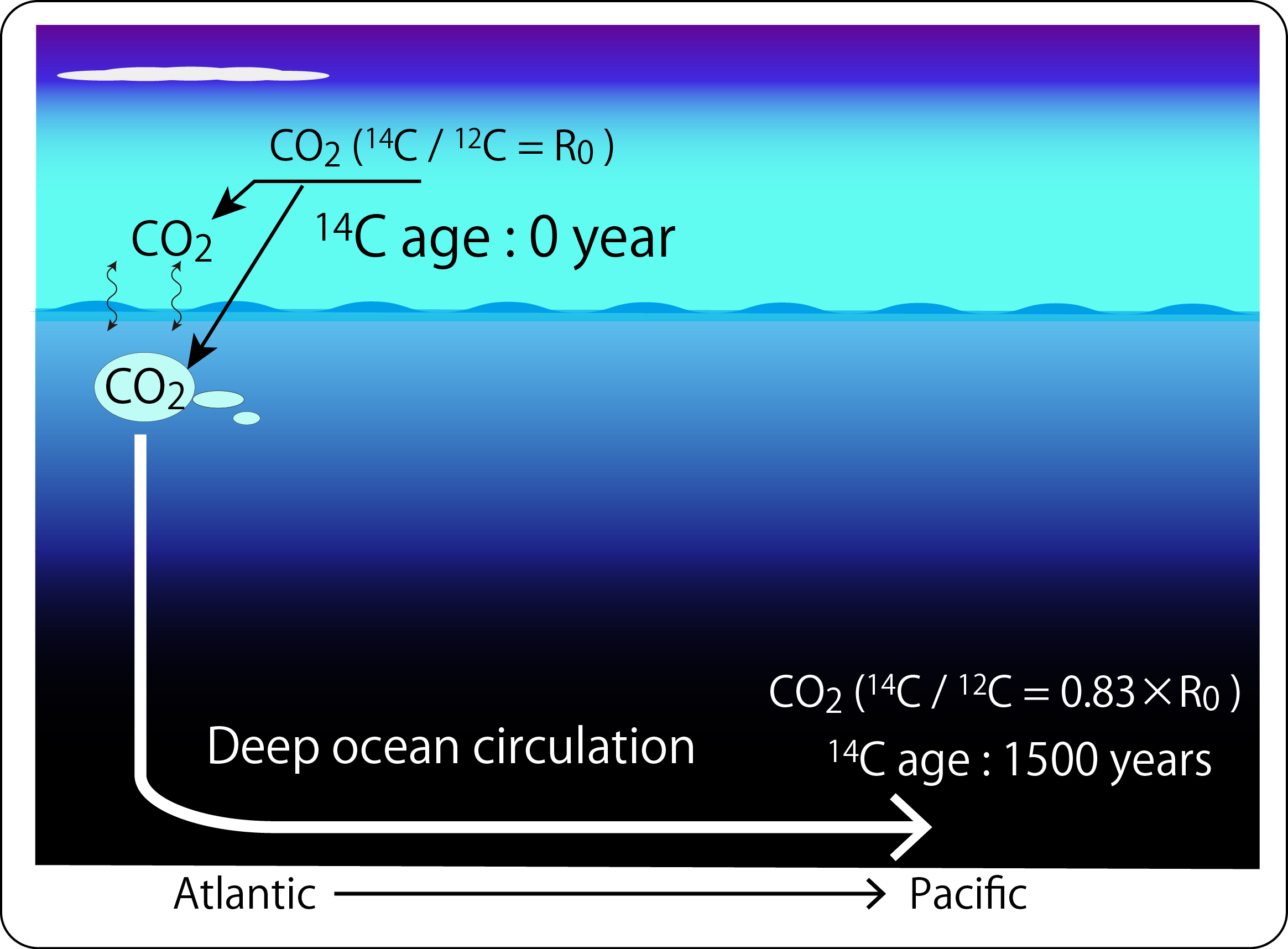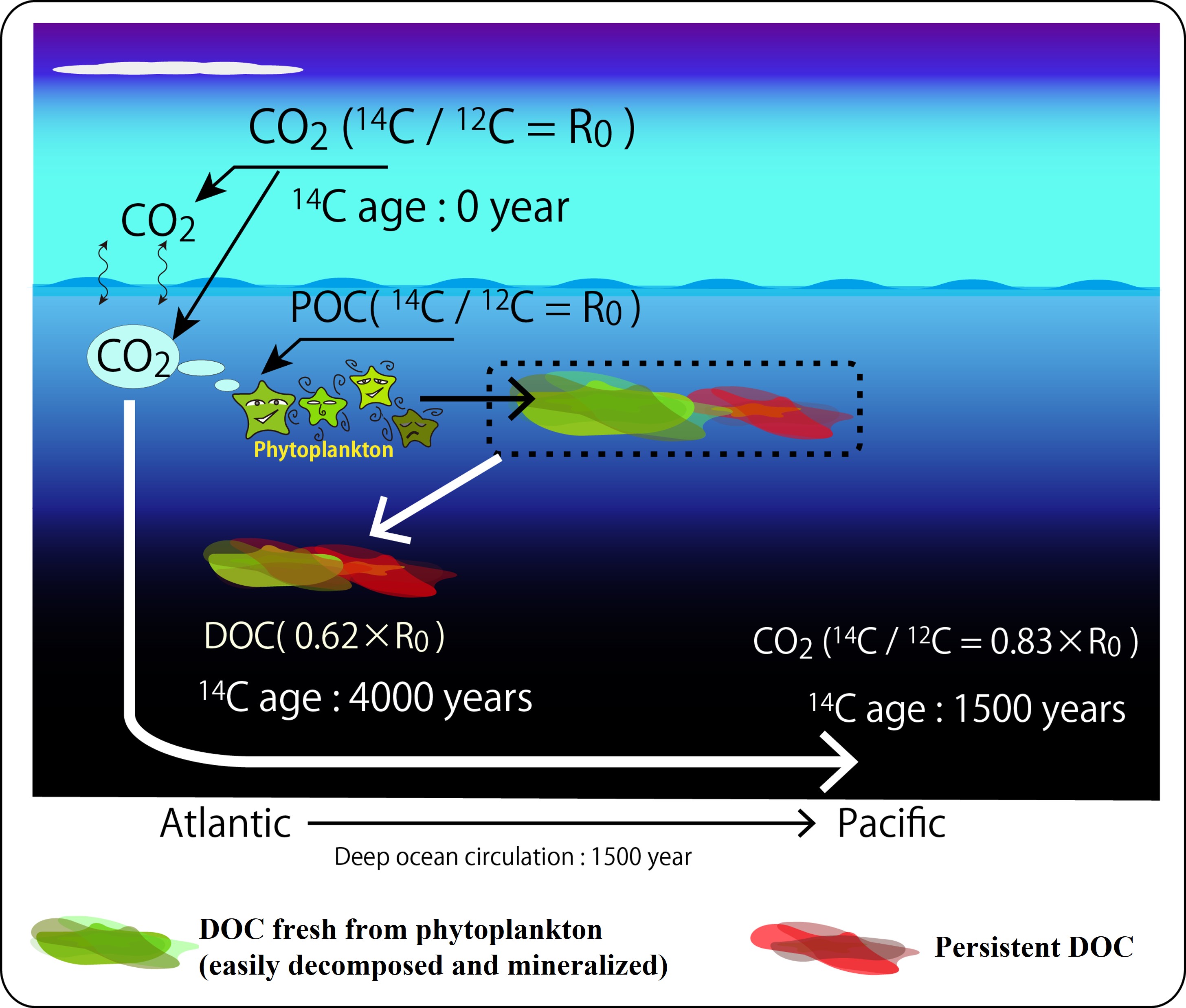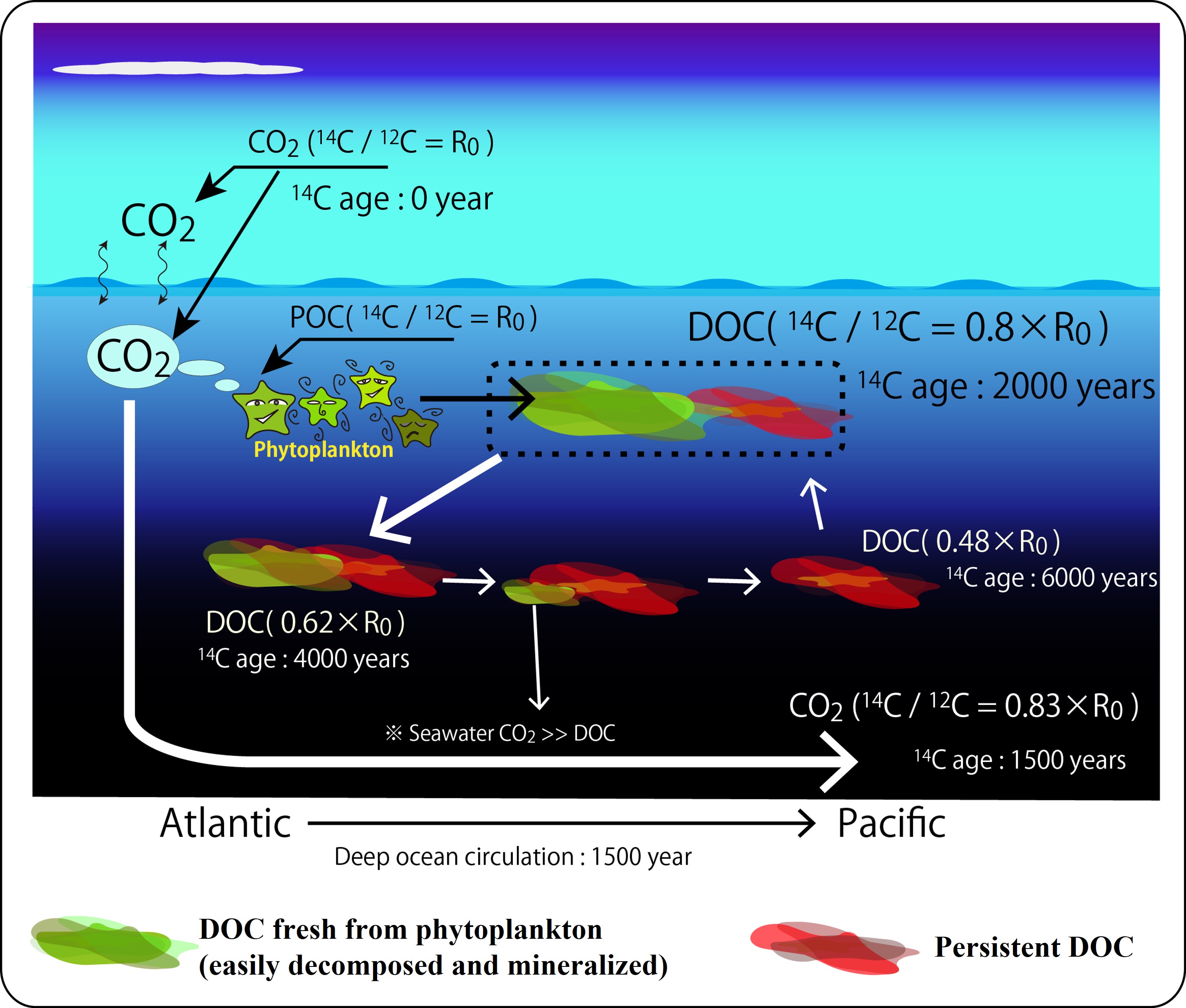Marine DOC with an average age of 6,000 years
The average age based on the 14C dating method for the DOC in the deep North Atlantic is 4,000 years, while in the North Pacific, it reaches 6,000 years. The difference is 2,000 years. This is longer than the time of deep circulation (1,000 to 1,500 years). Let us consider this reason. Incidentally, in surface seawater, it is approximately 2,000 years everywhere.
First, consider the 14C dating method of carbon dioxide (the carbonic acid component). Since the ocean surface layer is in contact with the atmosphere, the 14C ratio of CO2 in surface seawater is the same as in the atmosphere. In other words, the 14C age of CO2 in surface seawater is zero. When the surface water sinks to the deep layer in the North Atlantic, the 14C supply from the atmosphere disappears. When the deep water reaches the North Pacific, the 14C ratio of CO2 is reduced to 0.83 times the atmospheric ratio. This translates to a 14C age of 1,500 years*. This can be regarded as water travel time due to deep circulation.
*Learn how to calculate on the previous page.

Next, we consider changes in the 14C age of the DOC.
Marine plants take up CO2 and turn it into particulate organic carbon (POC). Since living or soon-to-be-dead plant matter is POC, the 14C age of POC is close to 0. The 14C age of DOC (represented by the green blur in the figure below) immediately after POC decomposition would also be close to 0. However, since there is also persistent DOC in seawater, the 14C ratio of DOC in surface waters is smaller than in the atmosphere, and the average age is estimated to be 2,000 years old based on actual measurements. When the surface water sinks into the deep layer in the North Atlantic, the average age of DOC becomes 4,000 years old, and then 6,000 years old in the North Pacific at the end of the deep circulation. During the deep circulation, the DOC became 2,000 to 4,000 years old. Since the time scale of the deep circulation is about 1,500 years, the average age of the DOC increased more than the actual time elapsed. This has to be considered the decomposability of the DOC.

"Young DOC" freshly produced from POC is easily decomposed and mineralized. This is probably because young DOC contains many components derived from the soft tissues of organisms. Therefore, when the surface water sinks into the deeper layers, the proportion of "young DOC" becomes smaller, and only persistent "old DOC" that was originally present remains. As a result, the average age of the DOC in the deep Pacific Ocean at the end of the deep circulation is as old as 6,000 years. And since only persistent DOC, which has been formed thousands of years ago, remains in the deep water and is brought to the surface water, the average age of DOC in the surface water is thought to be as old as 2,000 years.

By the way, if DOC becomes CO2 in deep water, will there be no error in estimating the 14C age of CO2? The concentration of total carbonic acid in seawater is about 2000 μmol/L, while the concentration of DOC is less than 50 μmol/L. Even if DOC is degraded by microorganisms and converted to CO2 along with the 14C contained in it, the effect on the 14C ratio of the originally large amount of CO2 is negligible.
